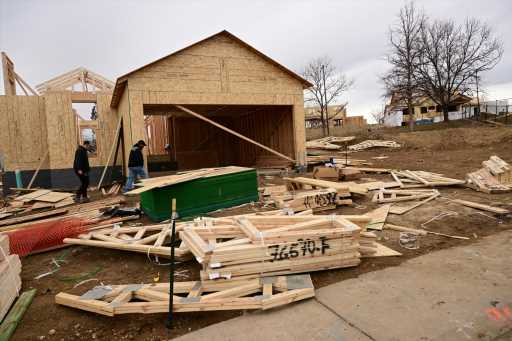The Marshall fire victims with lower incomes and lesser insurance policies are falling behind in their efforts to rebuild after Colorado’s most destructive wildfire, according to new research tracking recovery in Boulder County.
Researchers with the Urban Institute, a nonprofit research organization that gathers data and evidence to guide public policy, are surveying hundreds of households in the Marshall fire burn zone to understand how they are recovering from the fire. So far, they have conducted two rounds of questionnaires that ask about everything from insurance coverage to green building to mental and physical well-being.
The first report from the survey centers on rebuilding efforts, using respondents’ answers and analyzing building permit data in Louisville, Superior and unincorporated Boulder County. The survey includes people who lost their homes, those whose homes were damaged by wind and smoke, and those whose homes remained intact.
The survivors with higher reported household incomes are more likely to have a building permit with new homes under construction than those who earn less, the survey found. For households making less than $75,000 per year, 70% still do not have a building permit while 62% of those making more than $200,000 a year have a building permit, according to the report.
The researchers said it’s important to know who is lagging behind so community leaders can put policies and resources in place to help them.
“As a Louisville resident and as someone who’s really concerned with equity in the composition of my community, if that does mean at the end of the day that folks who are lower-income are less likely to return to my community, that’s a problem for me,” said Katie Dickinson, an assistant professor of environmental and occupational health at the Colorado School of Public Health. “Thinking about what those folks might need today to put them on a path where they might be able to come back, speaking as a resident, would be my preference.”
In the weeks after the Marshall fire, hundreds of families learned they were vastly underinsured and their policies would pay out far less than what it would cost to rebuild.
Now, the data shows that only a quarter of the people who say insurance will pay less than half of their rebuilding costs have construction permits. Meanwhile, almost half of the people whose insurance will cover 75% to 100% of the replacement costs have their permits, Dickinson said.
“Those two things are correlated,” she said. “The higher-income folks are also more highly insured. So that’s compounding that issue.”
The researchers are closely watching how the income and insurance disparity will factor into people’s decision to return to the community.
So far, five of the 165 survey participants who lost their homes have sold their lots and moved away, Dickinson said. But that number could increase as time passes and more people struggle to recoup their financial losses.
Still, it’s too early to determine how many people will sell their property rather than rebuild, said Andrew Rumbach, a senior fellow at the Urban Institute. It usually takes more than a year for people to start making permanent decisions, he said.
And it’s hard to compare the Marshall fire to other wildfires because it tore through suburban neighborhoods. Inflation, interest rates and a tight housing market make it different from other wildfire recovery processes, Rumbach said.
The amount of money people have also may determine whether they decide to upgrade their homes to the highest green-building standards. Early permits show a majority of homeowners are choosing to go with the higher standards, but observers wonder if that’s because they are the people with deeper pockets and more resources.
Already, state officials have thought about how the last group to rebuild might need help. The Dec. 30, 2021, wildfire, which caused more than $2 billion in damages and killed two people, has prompted multiple bills at the state legislature as politicians try to protect Colorado residents from the growing threat of wildfires caused by climate change.
At a CBS Colorado town hall last month in Superior, Gov. Jared Polis responded to a pointed question about why some state funds haven’t been released to help fire victims. But Polis explained that the $20 million the state legislature set aside to dole out to Marshall fire families would be reserved for those who needed it the most after their insurance and other financial claims were settled.
It is intended to provide up to $50,000 to about 220 households.
“You could argue it could have been (divided) in different ways,” Polis said. “Maybe it’s just a flat $10,000 for everybody. But we think about a quarter of the folks with the last money in, the underinsured, whatever it is, they will get that $50,000.”
It’s these questions that the researchers hope their study will help resolve.
“At what stage is the most help needed and when do you have the right information to know who really should be prioritized with those types of funds?” Dickinson said. “Those are tricky questions.”
Get more Colorado news by signing up for our daily Your Morning Dozen email newsletter.
Source: Read Full Article
-
Who is Kemi Badenoch's husband Hamish? | The Sun
-
Nigel Farage says Zelensky 'jumped the gun in a very dangerous way'
-
‘Relief for the world!’ First Ukrainian grain ship leaves Odessa under deal with Russia
-
Putin deploys 11 nuclear bombers just 20 miles from Nato border as Russia warns of apocalyptic World War 3 | The Sun
-
TikTok influencers fall into 'black ice' ponds at £1bn Dubai hotel

